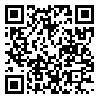BibTeX | RIS | EndNote | Medlars | ProCite | Reference Manager | RefWorks
Send citation to:
URL: http://ijhe.tums.ac.ir/article-1-5315-en.html

 1, A Charkazi2
1, A Charkazi2 
 , N Behnampour3
, N Behnampour3 
 , A Zafarzadeh4
, A Zafarzadeh4 
 , S Garezgar5
, S Garezgar5 
 , S Davoudinia5
, S Davoudinia5 
 , P Borgheie6
, P Borgheie6 

2- Assistant Professor of Health Education School of health, Golestan University of Medical Sciences, Gorgan, Iran.
3- Assistant Professor of Biostatistic School of health, Golestan University of Medical Sciences, Gorgan, Iran.
4- Assistant professor of Environmental Health Engineering, Environmental Health Research Center, School of Health, Golestan University of Medical Sciences, Gorgan, Iran.
5- Student of Environmental Health Engineering, Golestan University of Medical Sciences, Gorgan, Iran.
6- BSc of Environmental Health Engineering, Health center of Gorgan, Golestan, Iran.
Background & Objective: Hairdressing is one of the most public places and most important from the health issues (personal and environmental) point of view. In such places, non-observance of sanitary and non-normative activities are detrimental to the health of the community. The aim of this study was to evaluate the use of disinfectants to control infectious diseases transmitted through hairdressers and infection control, as well as to determine the knowledge, attitude, and practice of barbers with reference to the infectious diseases. Materials & Methods: The study included all female hairdresser (150 hairdresser) having official work in Gorgan City. The data required were collected through a questionnaire consisted of four parts: demographic information, knowledge, attitude, and practice questions (13 questions each) respectively. Disinfectants used were assessed using a checklist. Results: It was found that the most used disinfectant was bleaching powder (74.4%). The weekly and daily disinfection frequencies were 52.63 and 33.3% respectively. The research revealed that 49.45% had not have oven or autoclave to sterilize their dressing tools. The most used antiseptic for skin and hair was alcohol. Regarding infectious diseases, the barbers mean awareness was 10.83 ± 2.03, mean attitude 54.71 ± 3.99, and the mean performance was 12.44± 1.07. There were a significant positive correlation (p<0.01) between the variables of knowledge and attitude, knowledge and behavior, and attitude and performance. Conclusion: Barbers awareness about disinfection was moderate indicating the need for education and training about the types of disinfectants and how to use them. Nevertheless, the knowledge, attitude, and practices of barbers about the disease was moderate to high. Existence of the mandatory training courses on public health and having valid certificate conducted by private sector are the main reasons for increased awareness and attitude of the barbers and beauty salon dressers about infectious diseases.
Received: 2014/09/21 | Accepted: 2015/07/25 | Published: 2015/07/25
| Rights and Permissions | |
 |
This work is licensed under a Creative Commons Attribution-NonCommercial 4.0 International License. |



